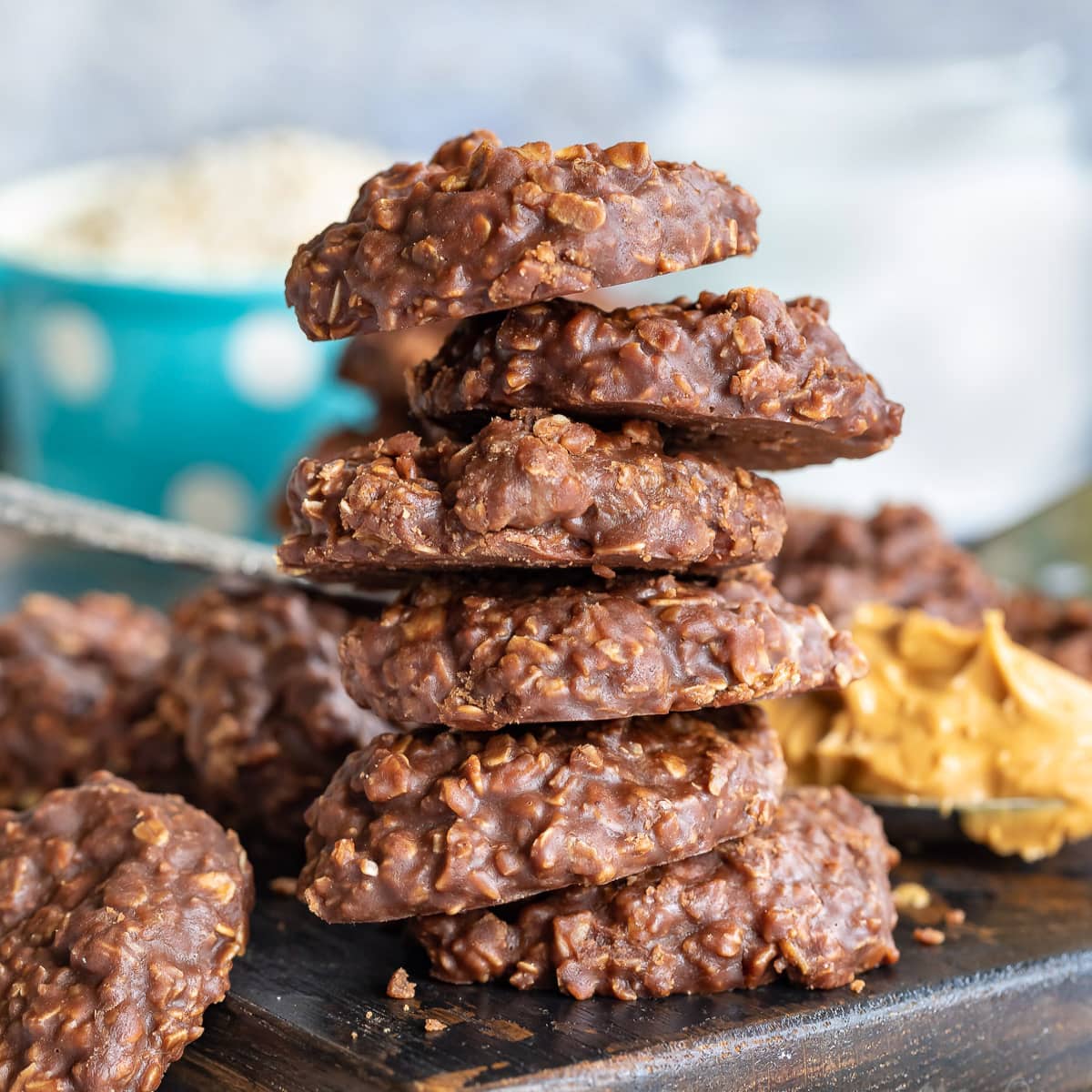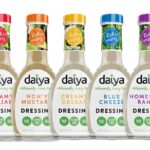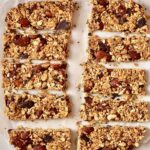Imagine transforming beloved comfort foods into vibrant, allergen-free delights. This guide unveils the secrets to reinventing classic recipes, replacing common allergens like dairy, gluten, nuts, and soy with delicious and nutritious alternatives. We’ll explore ingredient substitutions, adapt cooking methods, and craft three stunning allergen-free recipes that capture the essence of their classic counterparts, all while maintaining exceptional taste and texture.
From creamy dairy-free cheesecakes to rich, gluten-free pasta dishes, we’ll navigate the challenges and opportunities of allergen-free cooking, providing a comprehensive resource for home cooks seeking to expand their culinary horizons and cater to dietary needs. Discover how subtle adjustments can yield extraordinary results, creating dishes that are both satisfying and inclusive.
Adapting Cooking Methods for Allergen-Free Baking and Cooking
Transitioning classic recipes to allergen-free versions often requires adapting established cooking methods. This involves understanding the impact of allergen-free substitutes on baking and cooking processes, and adjusting techniques to achieve comparable results. The subtle differences in ingredient properties necessitate careful attention to detail to maintain the desired texture, flavor, and overall quality of the final product.
Traditional baking and cooking methods often rely on the properties of specific ingredients, such as gluten for elasticity in bread or eggs for binding in cakes. Allergen-free alternatives, such as gluten-free flours or flax eggs, possess different characteristics. Therefore, a direct substitution may not yield the same outcome. Successful allergen-free cooking necessitates a deeper understanding of these differences and how to compensate for them through adjustments in techniques and ingredient ratios.
Baking Time and Temperature Adjustments
Baking times and temperatures often require modification when using allergen-free ingredients. Gluten-free flours, for example, tend to bake faster and brown more quickly than wheat flour due to their lower moisture content and different protein structure. This necessitates lowering the oven temperature and potentially shortening the baking time to prevent burning and ensure the center is fully cooked. Conversely, some allergen-free substitutes, like certain nut flours, might require slightly higher temperatures and longer baking times to achieve a similar level of doneness. Careful monitoring and potentially using a food thermometer are crucial for achieving optimal results. For instance, a recipe calling for 350°F (175°C) for 30 minutes with wheat flour might require 325°F (160°C) for 25-28 minutes when using a gluten-free blend. The exact adjustment will depend on the specific flour blend used and the recipe.
Achieving Similar Textures in Allergen-Free Dishes
Replicating the texture of classic dishes is a key challenge in allergen-free cooking. The absence of gluten, for instance, can lead to crumbly cakes or dense breads. To compensate, xanthan gum or guar gum are often added to gluten-free recipes to mimic the elasticity and structure provided by gluten. Similarly, replacing eggs with flax eggs or applesauce requires adjustments to the recipe’s liquid content and potentially the addition of binding agents to achieve the desired texture. In the case of creamy sauces, using allergen-free alternatives like coconut milk or cashew cream can replicate the richness and texture of traditional dairy-based sauces. The use of starches, such as tapioca starch or arrowroot starch, can also help thicken sauces and create a smoother consistency. Consider the visual: a perfectly smooth, creamy vegan chocolate mousse, indistinguishable in texture from its dairy-based counterpart, a testament to the skillful application of these techniques.
Recipe Development
Reimagining classic dishes without common allergens requires careful consideration of both ingredient substitution and cooking technique. The following recipes demonstrate how familiar favorites can be transformed into delicious and inclusive meals, maintaining the essence of the original while accommodating dietary restrictions. Each recipe provides a detailed step-by-step guide, highlighting the sensory experience to aid in understanding the changes involved in allergen-free adaptation.
Gluten-Free Pasta Carbonara
This recipe replaces traditional pasta and parmesan cheese with gluten-free alternatives to create a satisfying and authentic-tasting carbonara.
- Ingredients: 8 oz gluten-free spaghetti, 4 large eggs, 1/2 cup grated dairy-free parmesan cheese (nutritional yeast is a good option), 4 oz pancetta (or guanciale, if available), 1/4 cup heavy cream (or full-fat coconut milk for vegan option), freshly ground black pepper to taste.
- Preparation: Cook the gluten-free spaghetti according to package directions. While the pasta cooks, dice the pancetta and fry it in a pan until crispy. In a separate bowl, whisk together the eggs, dairy-free parmesan cheese, and heavy cream (or coconut milk). Season generously with black pepper.
- Cooking: Drain the cooked pasta, reserving about 1/4 cup of pasta water. Add the hot pasta to the pan with the crispy pancetta. Quickly pour the egg mixture over the pasta and toss constantly to create a creamy sauce. If the sauce is too thick, add a little of the reserved pasta water. Serve immediately.
The sensory experience of this gluten-free carbonara is remarkably similar to the classic version. The creamy, rich sauce clings beautifully to the gluten-free pasta, delivering a satisfying mouthfeel. The aroma of crispy pancetta and pepper is equally enticing. The taste might be slightly different depending on the brand of gluten-free pasta and dairy-free parmesan used, but the overall effect remains faithful to the original.
Dairy-Free Cheesecake
This recipe uses a cashew cream base to achieve a luxuriously smooth and creamy cheesecake without any dairy.
- Ingredients: 1 ½ cups raw cashews (soaked in hot water for at least 30 minutes), 1/2 cup maple syrup, 1/4 cup lemon juice, 1 tsp vanilla extract, 1/4 tsp salt, 1 ½ cups gluten-free graham cracker crumbs, 6 tbsp melted coconut oil.
- Preparation: Drain the soaked cashews and blend them in a high-speed blender with maple syrup, lemon juice, vanilla extract, and salt until completely smooth and creamy. In a separate bowl, combine the graham cracker crumbs and melted coconut oil. Press this mixture into the bottom of a springform pan.
- Cooking: Pour the cashew cream mixture over the crust. Refrigerate for at least 4 hours, or preferably overnight, to allow the cheesecake to set.
The texture of this dairy-free cheesecake is incredibly smooth and creamy, rivaling the richness of a traditional cheesecake. The cashew cream base lends a subtly nutty flavor that complements the sweetness of the maple syrup. The aroma is delicate and pleasant, with hints of vanilla and lemon. While the taste is slightly different from a traditional cheesecake, it offers a unique and equally delightful experience.
Nut-Free Brownies
This recipe replaces traditional nuts with sunflower seeds for a fudgy and decadent brownie that is completely nut-free.
- Ingredients: 1 cup sunflower seeds, 1 cup unsweetened cocoa powder, 1 ½ cups granulated sugar, ½ cup unsweetened applesauce, 2 large eggs, 1 tsp vanilla extract, ½ cup all-purpose flour (or gluten-free blend), ½ tsp baking powder, ¼ tsp salt.
- Preparation: Preheat oven to 350°F (175°C). Grease and flour an 8×8 inch baking pan. Pulse sunflower seeds in a food processor until finely ground. In a large bowl, whisk together the cocoa powder, sugar, applesauce, eggs, and vanilla extract. Add the ground sunflower seeds, flour, baking powder, and salt. Mix until just combined.
- Cooking: Pour batter into the prepared pan and bake for 25-30 minutes, or until a toothpick inserted into the center comes out with moist crumbs. Let cool completely before cutting and serving.
These nut-free brownies boast a wonderfully fudgy texture, with a slightly grainy consistency from the sunflower seeds. The aroma is rich and chocolatey, with a subtle hint of sunflower seed. The taste is intensely chocolatey, with the sunflower seeds providing a pleasant textural contrast and a slightly nutty undertone. The overall experience is comparable to a classic brownie, offering a satisfyingly decadent treat.
Presentation and Serving Suggestions for Allergen-Free Classics

Elevating the presentation of allergen-free dishes is crucial to ensuring they are not only delicious but also visually appealing, fostering a positive dining experience. Careful attention to color, texture, and plating techniques can transform simple allergen-free recipes into culinary masterpieces. This section will explore visually descriptive examples and creative serving suggestions to enhance the presentation of classic dishes adapted for various allergies.
Visually Appealing Allergen-Free Dishes
The key to creating visually stunning allergen-free dishes lies in understanding how color, texture, and composition contribute to overall appeal. Consider using vibrant ingredients to create a colorful and appetizing presentation. For example, a vibrant green salad with a medley of colorful vegetables and a bright citrus vinaigrette will be far more enticing than a dull, monochromatic dish. Similarly, contrasting textures – such as the crispness of a vegetable against the creaminess of a sauce – add visual interest and enhance the dining experience. The careful arrangement of food on the plate is equally important.
Creative Serving Suggestions and Plating Ideas
Plating techniques can significantly impact the perceived quality of a dish. For instance, a simple pasta dish can be elevated by using a shallow bowl to showcase the pasta’s color and texture, garnished with fresh herbs and a drizzle of olive oil. Alternatively, a more elaborate presentation might involve arranging the pasta in a swirl on the plate, creating a visually appealing pattern. For desserts, consider using attractive serving dishes and garnishes. A simple gluten-free cake can be transformed into a showstopper by dusting it with powdered sugar, adding fresh berries, or drizzling it with a flavorful sauce.
Plating and Serving Suggestions Infographic Examples
Classic Chocolate Cake (Dairy-Free, Gluten-Free): Imagine a rich, dark brown, moist cake, delicately dusted with powdered sugar. The cake’s crumbly texture is subtly visible, and alongside it sits a dollop of dairy-free whipped cream, its ivory white contrasting beautifully with the dark chocolate. A scattering of fresh raspberries provides a pop of vibrant red and juicy texture. Serve on a rustic, white plate for maximum visual impact.
Chicken Piccata (Gluten-Free, Egg-Free): Picture a plate with vibrant lemon-yellow sauce cascading over tender, snow-white chicken breasts. The chicken is lightly browned, showing off a lovely sear. Capers, tiny dark green spheres, are scattered throughout the sauce, adding pops of color and a slight textural contrast. Serve with a side of vibrant green asparagus, lightly sautéed, for a balanced and appealing plate.
Creamy Tomato Soup (Dairy-Free): Envision a deep red, velvety smooth soup, served in a warm, rustic bowl. A swirl of dairy-free coconut cream adds a layer of creamy white, contrasting beautifully with the vibrant red soup. A sprinkle of fresh basil provides a pop of green and a hint of freshness. A crusty, gluten-free breadstick, golden brown and slightly crispy, is placed alongside, offering a textural contrast.
Reimagining classic recipes without compromising flavor or texture is entirely achievable. By understanding allergen-free ingredient substitutions and adapting cooking techniques, you can create delicious and inclusive meals for everyone. This journey into allergen-free cooking opens a world of culinary creativity, allowing you to share cherished dishes with a wider audience and expand your own cooking repertoire with confidence. The vibrant colors, enticing aromas, and delightful textures of these reinvented classics will leave a lasting impression, proving that delicious and allergy-friendly can perfectly coexist.
Questions and Answers
Can I use any allergen-free substitute for any allergen?
No, each allergen requires careful consideration when choosing a substitute. Texture and flavor profiles vary significantly, so selecting the appropriate replacement is crucial for successful recipe adaptation.
How do I ensure my allergen-free recipes are truly safe for those with allergies?
Always meticulously check ingredient labels for potential cross-contamination. Use separate cutting boards and utensils for allergen-free cooking, and thoroughly clean your workspace before and after preparing these dishes.
Where can I find allergen-free ingredients?
Many allergen-free ingredients are readily available at most supermarkets, health food stores, and online retailers. Specialty stores catering to dietary restrictions often offer a wider selection.
What if my allergen-free recipe doesn’t turn out exactly like the original?
Don’t be discouraged! Allergen-free cooking often requires some experimentation. Adjustments to cooking times, temperatures, and ingredient ratios may be necessary to achieve desired results. Embrace the process of refinement!


